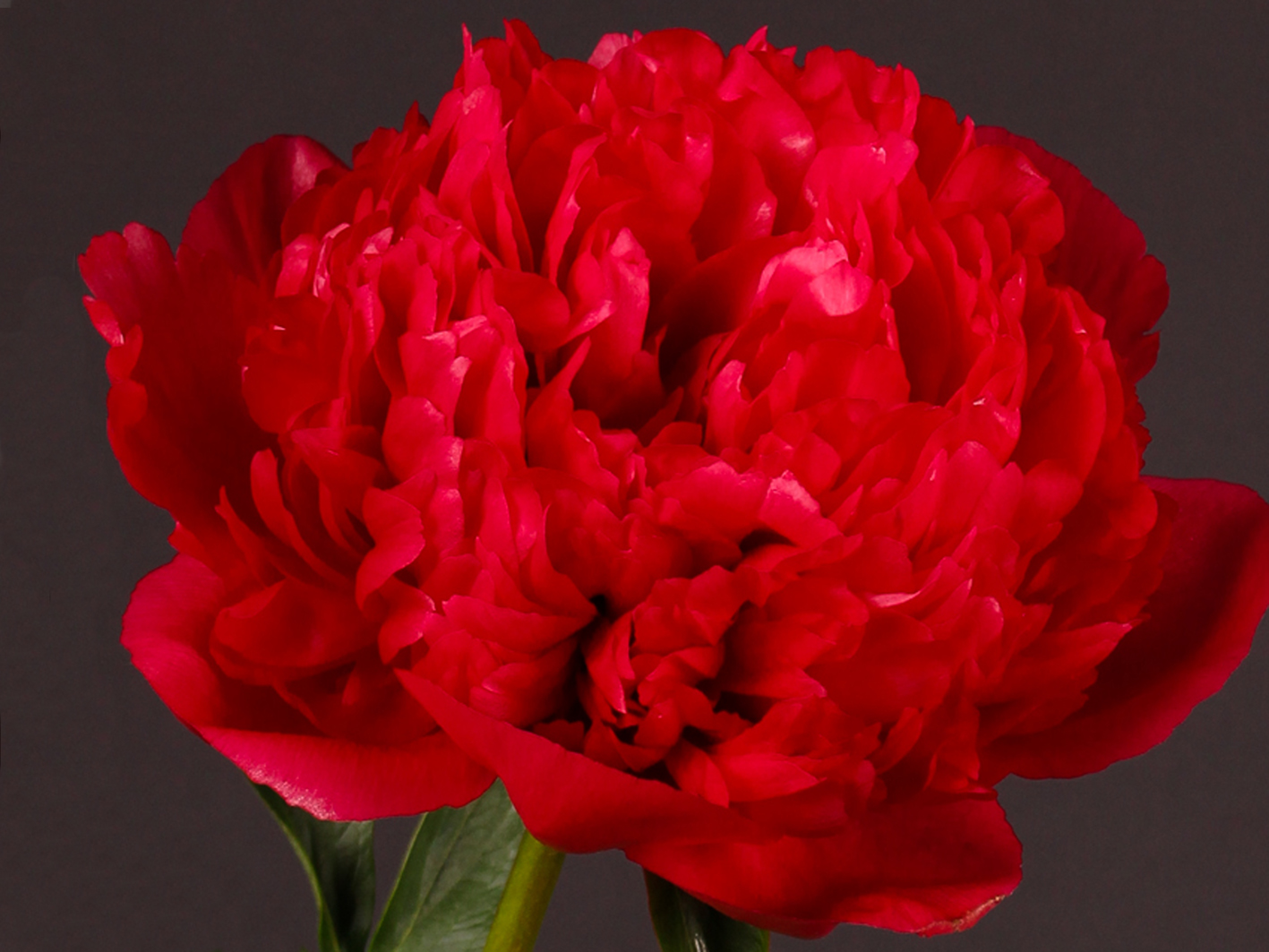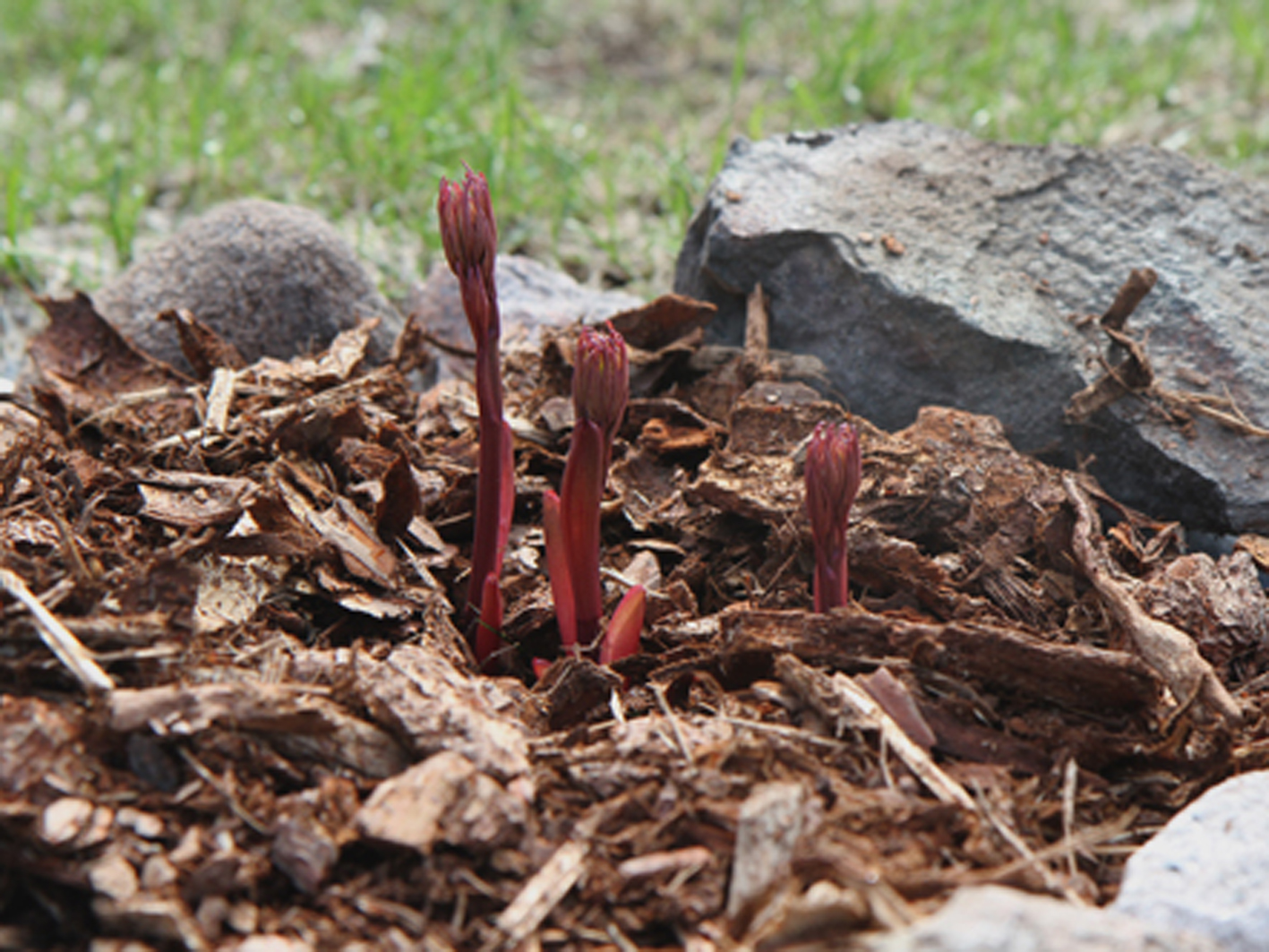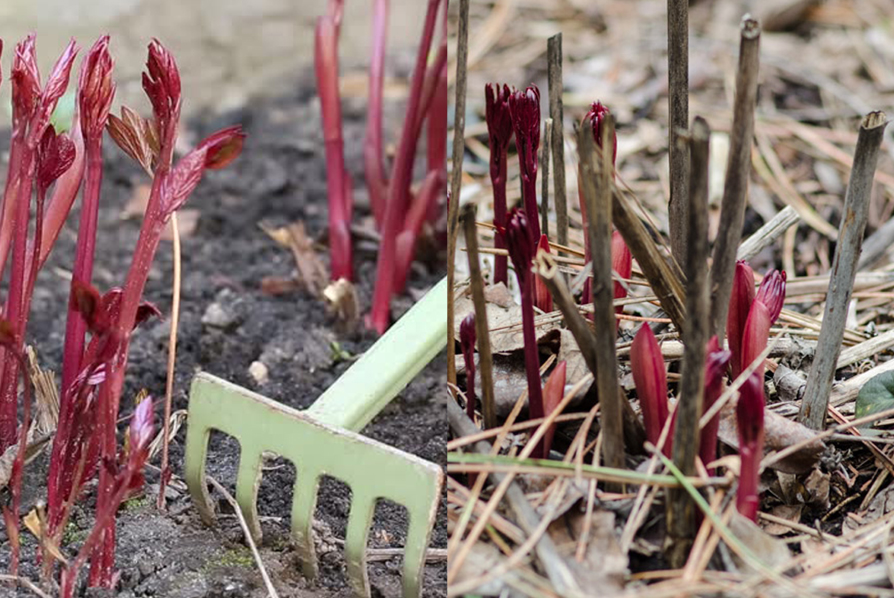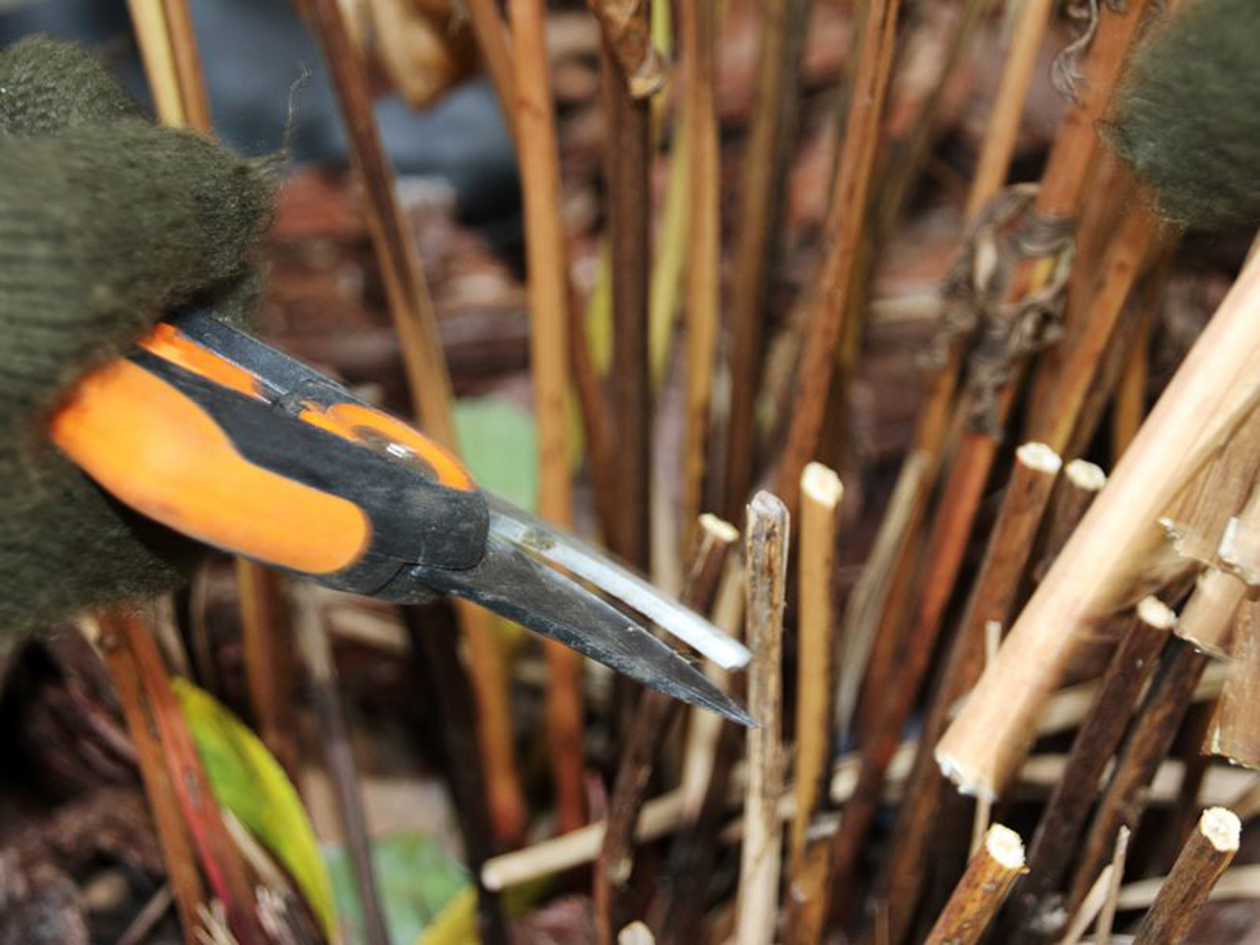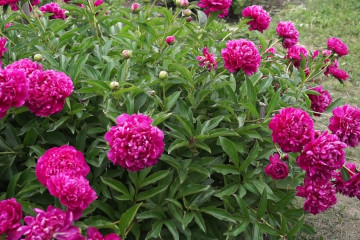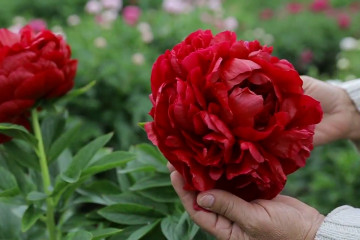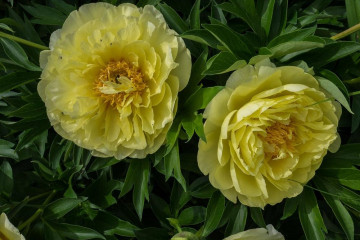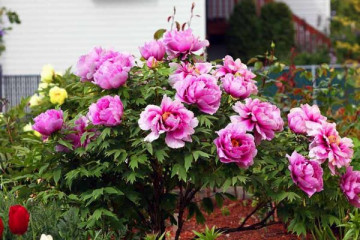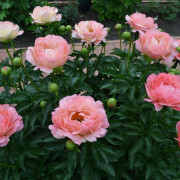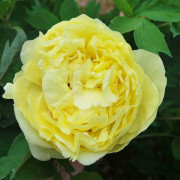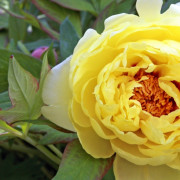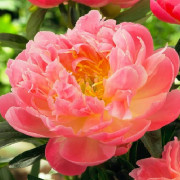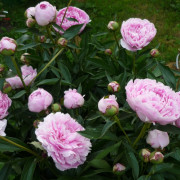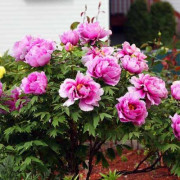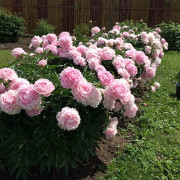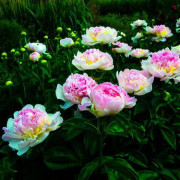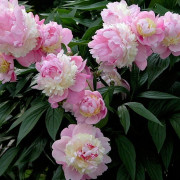Peony Team Performance - cultivation of a variety in the garden
Content:
Fragrant and lush peony flowers adorn flower beds, flower beds and lawns. These unpretentious flowers are loved by gardeners and landscape designers. The variety of colors and shapes of inflorescences allows everyone to find the most suitable variety. Team performance will surely interest everyone who has decided to replenish the collection of flowers with varietal peonies.
Peony Command Performance
The hybrid variety was introduced to the world community back in the 90s. Since then, the Command Performance peony not only has not lost its popularity, but, on the contrary, has taken an honorable leading place among double red peonies.
Description of the variety
This herbaceous plant is a hybrid (hybrida), which has powerful shoots about 70-80cm in height, partly prone to lodging. Leaves are carved, green, typical for peonies. They are absent on the lower part of the shoots.
Huge scarlet inflorescences are a feature of the Team Performance variety. This is what brought him fame and universal recognition. The diameter of the flower can reach 30 cm. On strong and long peduncles there are single flowers - pompons, which have a slightly perceptible pleasant aroma.
Advantages and disadvantages
Peony Command Performance, the description of which indicates a very aristocratic appearance, is a rather unpretentious hybrid. Many of its characteristics can be considered as advantages, namely:
- bright and spectacular bloom;
- high frost resistance;
- standard care requirements;
- climate resilience;
- ease of reproduction;
- weak susceptibility to disease.
Along with the pluses, there are also some disadvantages. These include:
- exactingness to the composition and structure of the soil;
- the need for regular feeding.
Use in landscape design
Peony Command performance is quite often used by landscape designers for various decorative purposes. To decorate the plots, not only the inflorescences of the plant are used, but also its green part.
Options for using peony in the process of landscaping the territory:
- With tape planting, it is used for zoning space on the site, as well as as a low hedge.
- Group plantings look spectacular as an accent in open lawn areas.
- You can use Command Performance in continuous flowering flower beds in a group with daylilies, irises or pelargoniums.
- Against the background of lush green boxwood or coniferous ornamental plants, peonies will stand out favorably and make up an original decorative composition in a group.
Planting and growing
In garden centers, planting material for peonies, as a rule, is represented by root cuttings. Sometimes you can also find small rooted plants. In the presence of an adult plant, parts of the root system are mainly used for reproduction, which are obtained as a result of division during autumn digging.
Choice of time and place
You can plant peonies in open ground both in spring and autumn. It is preferable to choose the second half of September - this way the plant will have time to take root before the onset of cold weather and in early spring it will start to grow.
Peony Command Kerfomans prefers sunny areas. But, given the predisposition of plant flowers to fading and rapid withering in the bright sun, it is better to place plantings in a partially lit place. This implies that it will only be fully illuminated in the morning or afternoon. The site must be protected from strong gusts of wind, and also not be flooded by melt water in spring.
Soil and flower preparation
Root cuttings or part of the root system must be rinsed under running water before planting, to remove dried, damaged and too long roots. 6-8 hours before planting, they are soaked in water at room temperature, and then dried a little in the fresh air.
The soil in the area intended for peonies is prepared in advance. It is better to start these activities a year before planting. During autumn digging, manure or compost, as well as sand, are introduced. Harrowing in the spring is combined with the introduction of complex mineral fertilizers.
Landing technology
The process of planting peonies is similar to the technology of planting ornamental shrubs. Procedure:
- 3-4 days before planting, planting pits are prepared with a size of 40x50 cm. The depth of the pits depends on the size of the seedling and should exceed it by 2 times. The distance between the grooves is 80-100 cm.
- A layer of compost 2-3 cm thick is poured at the bottom of each pit.
- The extracted soil is mixed with mineral fertilizer and rotted manure.
- Nutrient soil is poured in the form of a mound in each depression.
- The roots or cuttings are placed so that when the soil subsides, the buds are 7-10 cm below the soil level.
- Planting is close up and watered abundantly.
- The moistened soil is sprinkled with a layer of dry earth.
Immediately after planting, the seedlings need to be mulched. For this purpose, compost or dry manure is used. Mulching will prevent moisture from evaporating and serve as a source of nutrition for the plants in the spring.
Seed planting
Most often, it is recommended to remove wilted inflorescences and prevent seeds from ripening. So the plant's forces will be directed to the development of the root system.
The seed propagation method is used only in breeding. For crossing certain varieties, flowers are re-pollinated and seeds ripened on them are used for further experiments.
Care features
Peony Command Performance is an ideal combination of high decorative qualities with unpretentious care. There are few special requirements: a little more dressing and nutritious soil.
Basic requirements for growing:
- watering with warm, settled water as the soil dries up;
- top dressing 4-5 times per season from early spring to September with a frequency of 3-4 weeks;
- mulching the soil or loosening it regularly;
- preventive treatment of a flower from diseases and parasites.
Bloom
The peak of activity of the peony Komand Perfomas is the flowering period. In the middle zone, it falls in late June - early July, and in warmer regions - in mid-May. By the end of September, the plant gradually slows down and prepares for a dormant period.
During flowering, the peony needs regular feeding and an increased frequency of watering. The last wilted flowers are removed along with the peduncles, then the last dressing is applied and the frequency of watering begins to be reduced.
If the peony does not bloom
In the absence of buds and flowers, you need to find the cause of the failure in the development of the plant. The main factors that can influence this:
- non-compliance with the watering schedule;
- untimely fertilization;
- unsuitable soil composition.
Post-flowering care
Transplanting peonies to a new place can be started only after the end of flowering. It is carried out in the same way as planting roots during reproduction. It is not recommended to transplant especially large plants, but if necessary, then you must act very carefully.
At the beginning of autumn, the peony begins to prepare for the cold weather. To do this, cut off all the shoots, shortening them to 10-15 cm. The cut parts can be laid on top as a preventive shelter.
Diseases and pests
The hybrid variety Command Performance is very rarely sick and only one preventive treatment before flowering is enough for it. But he is not immune from damage by aphids and ants. If these parasites are found on the plant, it should be sprayed with an insecticide. For prevention, it is recommended to sprinkle the soil around the plantings with wood ash.
Peony Coral Performance is one of the leaders among varieties with large double flowers with a red-scarlet color. It is not only very decorative, but also very unpretentious. Even beginners can grow this crop on the site and enjoy the abundant flowering.

